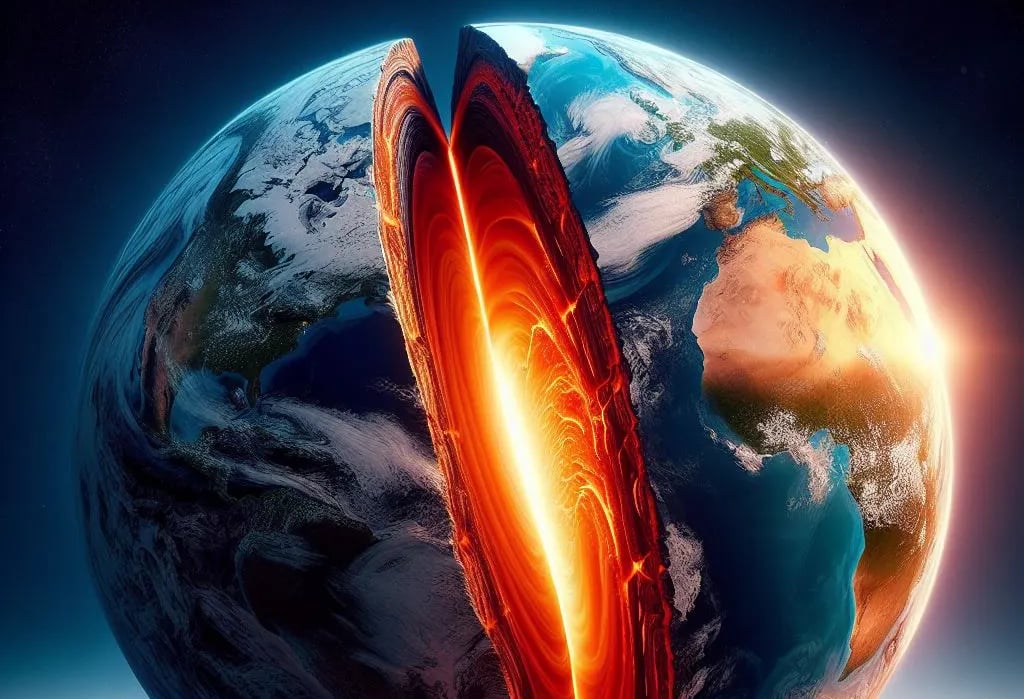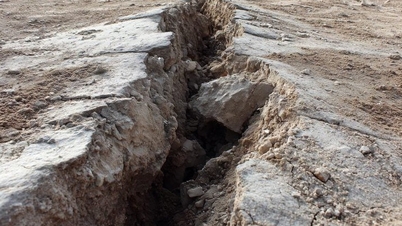(NLĐO) - Strange earthquakes in the Vogtland region of Germany, bordering the Czech Republic, may be a sign of unusual activity within the Earth's interior.
The earthquakes in Vogtland are considered unusual because the area does not lie on the boundary of any tectonic plates. Tectonic plates are fragments of the Earth's crust that are constantly moving and often cause geological activity such as earthquakes and volcanic activity at their edges.
To explain this phenomenon, a team of scientists led by Dr. Torsten Dahm, a geophysicist at the GFZ Center for Geosciences Research in Germany, deployed a new network of seismometers in the area.
From that, they pointed to an unexpected mechanism that could be the cause of earthquakes.

Beneath Earth's thin crust lie scorching structures including the upper mantle, lower mantle, outer core, and inner core - AI graphic.
These seismometers recorded a series of earthquakes in late March that were unlike any other in the region.
Specifically, the epicenters of the earthquakes in this series appear to have shifted 15 km north compared to previous earthquake series, suggesting that instead of occurring on a vertical fault axis, these earthquake series appear to be associated with a horizontal structure.
This reveals the complex seismic conditions beneath this picturesque area of rolling hills and lush green meadows.
Speaking to Live Science, Dr. Dahm said the reason for the earthquakes in the area is still unclear, but it is very likely that they are the result of CO2 gas bubbling from liquid magma at a depth of about 50 km.
However, there are no active volcanoes in the area, and there is very little evidence of ancient volcanic activity.
One possible explanation for this is that, in a rare event, magma in the mantle beneath the area erupted, escaping to the surface of the crust.
Compression within the crust may keep these magmas from erupting, but they can accumulate in the crust over time.
This leads to two possibilities. One is that in the next tens to hundreds of thousands of years, new volcanoes will develop in the area.
The second scenario is a more moderate one: They simply remain stuck there, moving and causing minor earthquakes.
The discovery suggesting magma is oozing from the mantle could also help explain strange earthquakes in other parts of the world .
The mantle is the layer directly beneath the crust in the Earth's structure, where many complex geophysical and geochemical activities take place, affecting the planet's development and everything that exists on its surface.
Source: https://nld.com.vn/magma-xi-khoi-lop-phu-trai-dat-sui-bot-ben-duoi-duc-czech-196240512091238285.htm


![[Image] Central Party Office summarizes work in 2025](/_next/image?url=https%3A%2F%2Fvphoto.vietnam.vn%2Fthumb%2F1200x675%2Fvietnam%2Fresource%2FIMAGE%2F2025%2F12%2F18%2F1766065572073_vptw-hoi-nghi-tong-ket-89-1204-jpg.webp&w=3840&q=75)







































































































Comment (0)